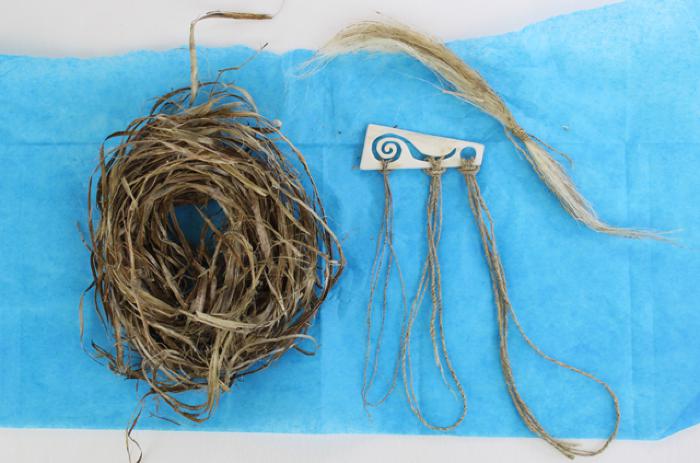Rope, Cord — IRafkuq (S), ARafkuq (N)

In classical Alutiiq society rope and cord were essential parts of many harvesting tools. Boats, bows, harpoons, fishing rigs, and nets all required quantities of cord. People often choose sinew, or animal tendon, for making cord because of its strength and elasticity. However, they also used long strips of leather, spruce root, and baleen to tie items together. They employed bull kelp stems as fishing line, and they braided plant fibers into twine. Nettles (Uticacceaefamily) are one Kodiak plant that provide excellent fiber for cordage.
Nettle stems contain bast fibers—long, stiff, woody fibers that form in the plant’s inner bark. These strong, lightweight fibers help the plant stand and are an excellent material for textiles and cord. For centuries, societies around the world have used nettles fibers to manufacture thread, fabric, and even paper. Alutiiq people recognized the value of these fibers and made them into cord for tying nets.
To transform nettles stems into fiber, you must separate the blast fibers from other parts of the plant. Some people harvest dried standing nettle stems and break them apart by hand or by crushing them with a stone. Others soak nettle stems in water, break them open, and peal-away unwanted parts. Next, people align the fibers by brushing. Then they twist them into strands. By braiding strands together, you can create cords of different lengths and thicknesses.
